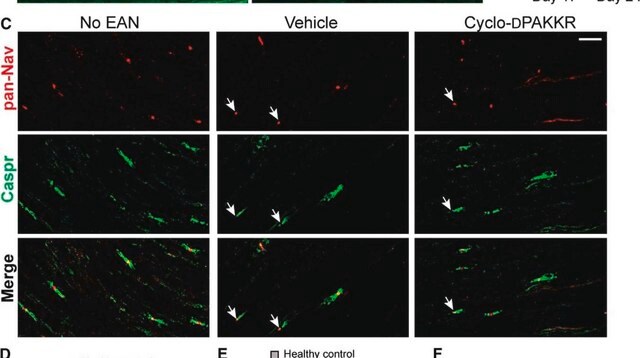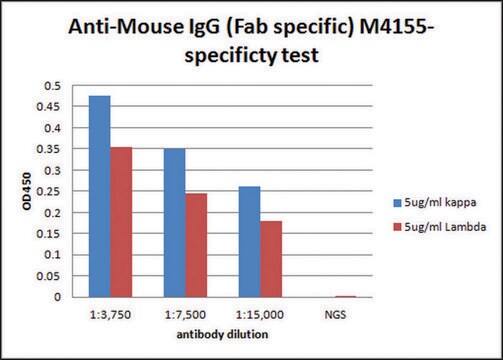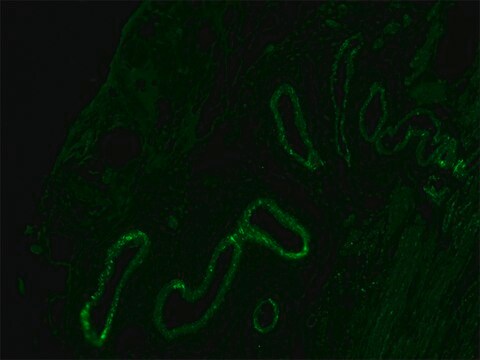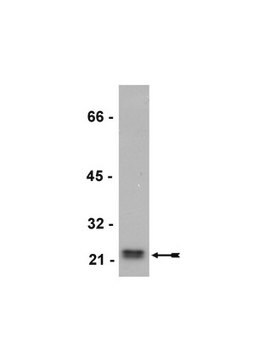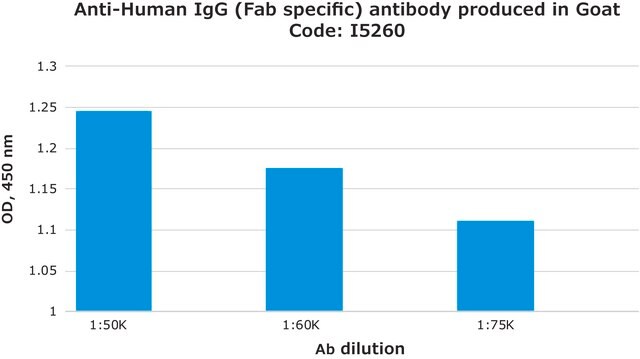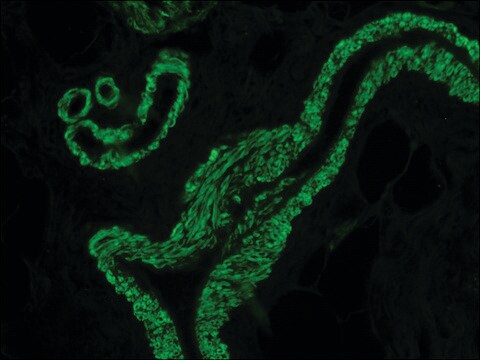SAB5200074
Monoclonal Anti-SCN2A1 antibody produced in mouse
clone S69-3, 1 mg/mL, purified immunoglobulin
Synonim(y):
Anti-NachII, Anti-Nav1.2, Anti-Nav1.2, S69-3, Anti-SCN, Anti-SCN2A, Anti-Scpll
About This Item
Polecane produkty
pochodzenie biologiczne
mouse
Poziom jakości
białko sprzężone
unconjugated
forma przeciwciała
purified immunoglobulin
rodzaj przeciwciała
primary antibodies
klon
S69-3, monoclonal
Postać
buffered aqueous glycerol solution
masa cząsteczkowa
antigen predicted mol wt 250 kDa
reaktywność gatunkowa
human, rat, mouse
stężenie
1 mg/mL
metody
immunohistochemistry: suitable
immunoprecipitation (IP): suitable
western blot: suitable
izotyp
IgG2a
numer dostępu NCBI
Warunki transportu
wet ice
temp. przechowywania
−20°C
docelowa modyfikacja potranslacyjna
unmodified
informacje o genach
rat ... Scn2a1(24766)
Opis ogólny
Specyficzność
Immunogen
Zastosowanie
Immunofluorescence (1 paper)
Western Blotting (1 paper)
Działania biochem./fizjol.
Cechy i korzyści
Postać fizyczna
Oświadczenie o zrzeczeniu się odpowiedzialności
Nie możesz znaleźć właściwego produktu?
Wypróbuj nasz Narzędzie selektora produktów.
Kod klasy składowania
10 - Combustible liquids
Klasa zagrożenia wodnego (WGK)
WGK 1
Temperatura zapłonu (°F)
Not applicable
Temperatura zapłonu (°C)
Not applicable
Certyfikaty analizy (CoA)
Poszukaj Certyfikaty analizy (CoA), wpisując numer partii/serii produktów. Numery serii i partii można znaleźć na etykiecie produktu po słowach „seria” lub „partia”.
Masz już ten produkt?
Dokumenty związane z niedawno zakupionymi produktami zostały zamieszczone w Bibliotece dokumentów.
Nasz zespół naukowców ma doświadczenie we wszystkich obszarach badań, w tym w naukach przyrodniczych, materiałoznawstwie, syntezie chemicznej, chromatografii, analityce i wielu innych dziedzinach.
Skontaktuj się z zespołem ds. pomocy technicznej